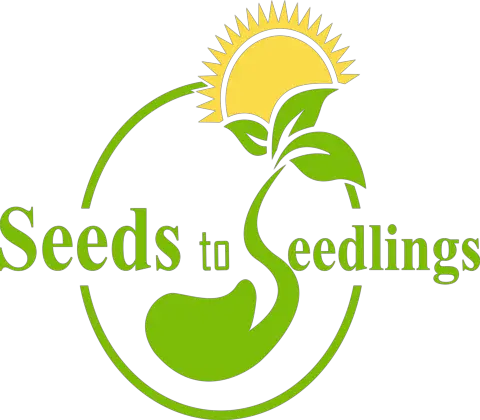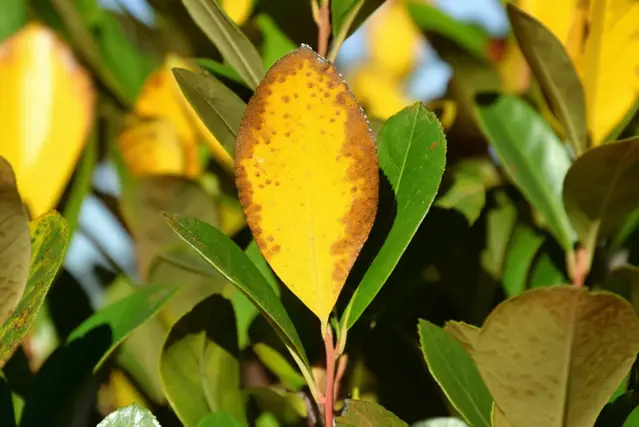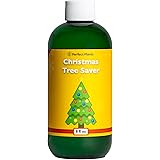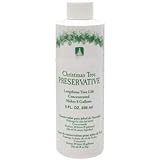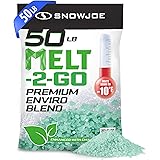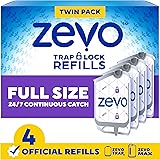Seeing your plant’s vibrant green leaves turn yellow can be alarming. It’s like watching the life drain out of your beloved green companion. The question that immediately pops into every plant lover’s mind is: “Can these yellow leaves turn green again?” The answer, as with most things in plant care, isn’t a simple yes or no. It depends on the underlying cause of the yellowing, the severity of the issue, and how quickly you address it.
This detailed guide will delve into the various reasons why leaves turn yellow, explore whether those leaves can regain their green vibrancy, and provide you with actionable solutions to restore your plant’s health. We’ll also cover current trends in plant care, relevant statistics, and regulations to help you become a more informed and successful plant parent in 2025.
Understanding Yellow Leaves: A Sign of Plant Distress
Yellowing leaves, a condition known as chlorosis, is a common symptom of various plant problems. Chlorosis occurs when the plant isn’t producing enough chlorophyll, the pigment responsible for the green color in leaves and essential for photosynthesis. Photosynthesis is the process by which plants convert light energy into chemical energy (food). Without sufficient chlorophyll, the plant struggles to produce the energy it needs to survive.
Why Do Leaves Turn Yellow? The Root Causes
Before we can determine if yellow leaves can turn green again, we need to understand the common culprits behind chlorosis. Here’s a breakdown of the most frequent causes:
1. Nutrient Deficiencies
Plants, like all living organisms, require a range of essential nutrients to thrive. Deficiencies in certain nutrients are a primary cause of yellowing leaves. The most common culprits include:
- Nitrogen (N): A key component of chlorophyll, nitrogen deficiency often manifests as a general yellowing of older leaves first, progressing to newer leaves if left unaddressed. The yellowing typically starts from the tip and moves inwards.
- Iron (Fe): Iron is essential for chlorophyll production. Iron deficiency, also known as iron chlorosis, often affects new growth first, causing yellowing between the veins while the veins remain green (interveinal chlorosis). This is particularly common in plants grown in alkaline soils.
- Magnesium (Mg): Similar to iron, magnesium deficiency also causes interveinal chlorosis, but it usually starts on older leaves first. The edges of the leaves may also turn yellow or brown.
- Potassium (K): Potassium deficiency can cause yellowing or browning along the leaf margins, often accompanied by stunted growth.
- Manganese (Mn): Manganese deficiency also results in interveinal chlorosis, similar to iron and magnesium deficiencies. Distinguishing between these deficiencies can be tricky and often requires soil testing.
Real-world example: A lemon tree with yellowing leaves, particularly between the veins, is a classic sign of iron deficiency, often exacerbated by alkaline soil conditions. Correcting the soil pH and applying chelated iron can often restore the leaves to their vibrant green.

chlorophyll recovery
2. Watering Issues
Both overwatering and underwatering can lead to yellow leaves. The trick is to get it just right!
- Overwatering: Overwatering deprives the roots of oxygen, leading to root rot. Damaged roots can’t effectively absorb water and nutrients, resulting in yellowing leaves. The leaves may also appear swollen or have brown spots.
- Underwatering: Insufficient water causes the plant to become stressed, leading to wilting and yellowing, particularly of the lower leaves. The soil will feel dry to the touch.
Read More: How to Care for Maidenhair Fern Plant Profile: Tips 2025
Current Trend: Smart watering systems are gaining popularity. These systems use sensors to monitor soil moisture levels and automatically adjust watering schedules, helping to prevent both overwatering and underwatering. According to a 2023 report by Grand View Research, the global smart irrigation market is expected to reach $3.9 billion by 2030, driven by increasing water scarcity and the need for efficient water management.
3. Light Problems
Plants need adequate light to perform photosynthesis. Insufficient or excessive light can cause yellowing leaves.
- Insufficient Light: Plants deprived of adequate light may develop yellowing leaves, especially the lower ones, as the plant sacrifices older leaves to conserve energy. The plant may also become leggy, with long, stretched stems.
- Excessive Light: Too much direct sunlight, especially for plants not accustomed to it, can scorch the leaves, causing them to turn yellow or brown. This is more common in indoor plants placed outdoors without acclimation.
Example: A fern placed in a dimly lit room will likely develop yellowing fronds. Moving it to a brighter location (but avoiding direct sunlight) can help improve its health.
4. Pests and Diseases
Various pests and diseases can damage plant tissues and disrupt nutrient uptake, leading to yellowing leaves.
- Pests: Sap-sucking insects like aphids, spider mites, and mealybugs can weaken the plant by feeding on its sap. This can cause yellowing, stippling, or distorted growth.
- Diseases: Fungal, bacterial, and viral diseases can also cause yellowing leaves. For example, root rot, caused by fungal pathogens, can severely impair the plant’s ability to absorb nutrients.
Regulations: The USDA regulates the import and interstate movement of plants to prevent the spread of plant pests and diseases. Quarantine regulations are often in place to control outbreaks of specific pests or diseases. Plant nurseries are inspected regularly to ensure compliance.
5. Temperature Stress
Extreme temperatures can stress plants and cause yellowing leaves.
- Cold Stress: Exposure to freezing temperatures can damage plant cells, leading to yellowing or browning of leaves.
- Heat Stress: High temperatures can cause plants to lose water rapidly, leading to wilting and yellowing.
6. Soil pH Imbalance
Soil pH affects the availability of nutrients to plants. If the soil pH is too high (alkaline) or too low (acidic), certain nutrients may become unavailable, even if they are present in the soil. This can lead to nutrient deficiencies and yellowing leaves.
7. Transplant Shock
Transplanting a plant can disrupt its root system, causing stress and leading to yellowing leaves. This is usually temporary, and the plant should recover as it establishes new roots.
8. Natural Aging
Sometimes, yellowing leaves are simply a sign of natural aging. Older leaves naturally turn yellow and eventually drop off as the plant focuses its energy on new growth. This is more common in deciduous trees in the fall.
Statistics on Plant Problems and Yellowing Leaves
According to a 2022 survey by the National Gardening Association, approximately 85% of households in the United States participate in gardening. Of those gardeners, about 60% reported experiencing problems with their plants, with yellowing leaves being one of the most common issues. Furthermore, a study published in the journal “HortScience” found that nutrient deficiencies and watering problems accounted for over 70% of cases of chlorosis in common ornamental plants.
Can Yellow Leaves Turn Green Again? The Possibility of Reversal
Now, let’s address the million-dollar question: Can yellow leaves turn green again? The answer depends on the severity of the damage and the underlying cause. Here’s a breakdown:
- Reversible: If the yellowing is caused by a minor nutrient deficiency, mild overwatering or underwatering, or temporary stress, the leaves may be able to recover and turn green again with appropriate treatment.
- Irreversible: If the yellowing is caused by severe nutrient deficiencies, root rot, advanced disease, or significant pest infestations, the leaves are unlikely to recover. In these cases, the best course of action is to focus on treating the underlying problem to prevent further damage to the plant and encourage new, healthy growth.
- Partially Reversible: In some cases, the yellow leaves may partially recover, showing some greening but never fully returning to their original vibrant color.
Important Note: Leaves are the plant’s food factories. If a leaf is severely damaged, the plant may be better off shedding it to conserve energy. Don’t be afraid to prune off severely yellowed or damaged leaves to encourage new growth. Check our guide on plant pruning!
Solutions: Reviving Yellow Leaves and Restoring Plant Health
Once you’ve identified the cause of the yellowing leaves, you can take steps to address the problem and restore your plant’s health. Here’s a comprehensive guide to solutions:
1. Addressing Nutrient Deficiencies
The key to correcting nutrient deficiencies is to identify the specific nutrient that’s lacking and provide it to the plant in a form it can readily absorb. Soil testing is the most accurate way to determine nutrient deficiencies, but you can often make an educated guess based on the symptoms.
a. Nitrogen Deficiency
Symptoms: General yellowing of older leaves, progressing to newer leaves. Stunted growth.
Solutions:
- Fertilizer: Apply a nitrogen-rich fertilizer. Look for fertilizers with a high N-P-K ratio (e.g., 20-10-10).
- Organic Amendments: Incorporate organic amendments like compost, blood meal, or fish emulsion into the soil.
- Foliar Feeding: For a quick boost, you can apply a diluted nitrogen fertilizer as a foliar spray.
b. Iron Deficiency
Symptoms: Interveinal chlorosis (yellowing between the veins) on new growth. The veins remain green.
Solutions:
- Chelated Iron: Apply chelated iron to the soil or as a foliar spray. Chelated iron is a form of iron that is more easily absorbed by plants, especially in alkaline soils.
- Soil Acidification: If the soil pH is too high (alkaline), amend the soil with sulfur or acidic organic matter like peat moss to lower the pH.
- Improve Drainage: Poor drainage can exacerbate iron deficiency. Ensure the soil is well-draining.
Example: For azaleas or rhododendrons suffering from iron chlorosis in alkaline soil, apply chelated iron and amend the soil with sulfur to lower the pH. Learn more about soil amendments!
c. Magnesium Deficiency
Symptoms: Interveinal chlorosis on older leaves, often starting at the leaf margins. Leaf edges may turn yellow or brown.
Solutions:
- Epsom Salts: Apply Epsom salts (magnesium sulfate) to the soil or as a foliar spray. Dissolve 1-2 tablespoons of Epsom salts in a gallon of water.
- Dolomitic Limestone: If the soil is acidic, apply dolomitic limestone to raise the pH and provide magnesium and calcium.
d. Potassium Deficiency
Symptoms: Yellowing or browning along the leaf margins. Stunted growth.
Solutions:
- Potassium Fertilizer: Apply a potassium-rich fertilizer. Look for fertilizers with a high K value in the N-P-K ratio.
- Wood Ash: Incorporate wood ash into the soil (use sparingly, as it can raise the pH).
- Banana Peels: Bury banana peels near the plant’s roots. They decompose and release potassium into the soil.
Table: Common Nutrient Deficiencies and Solutions
| Nutrient Deficiency | Symptoms | Solutions |
|---|---|---|
| Nitrogen (N) | General yellowing of older leaves, progressing to newer leaves. Stunted growth. | Nitrogen-rich fertilizer, compost, blood meal, fish emulsion. |
| Iron (Fe) | Interveinal chlorosis (yellowing between the veins) on new growth. | Chelated iron, soil acidification (sulfur), improve drainage. |
| Magnesium (Mg) | Interveinal chlorosis on older leaves, often starting at the leaf margins. | Epsom salts, dolomitic limestone (if soil is acidic). |
| Potassium (K) | Yellowing or browning along the leaf margins. Stunted growth. | Potassium-rich fertilizer, wood ash (use sparingly), banana peels. |
2. Correcting Watering Issues
Adjusting your watering habits is crucial to reviving plants suffering from overwatering or underwatering.
a. Overwatering
Symptoms: Yellowing leaves, often accompanied by wilting. Soil feels soggy. Brown spots on leaves. Potential for root rot.
Solutions:
- Reduce Watering: Allow the soil to dry out completely between waterings.
- Improve Drainage: Ensure the pot has drainage holes and the soil is well-draining. Consider repotting the plant into a pot with better drainage and fresh potting mix.
- Root Rot Treatment: If root rot is present, carefully remove the plant from the pot and inspect the roots. Cut away any rotten, mushy roots with sterile pruning shears. Treat the remaining roots with a fungicide. Repot the plant into a clean pot with fresh potting mix.
Modern Solutions: Moisture meters are affordable tools to measure soil moisture. Use them to inform your watering schedule. Check out our guide on essential gardening tools!
b. Underwatering
Symptoms: Yellowing leaves, particularly the lower ones. Wilting. Soil feels dry to the touch.
Solutions:
- Increase Watering: Water the plant thoroughly until water drains out of the drainage holes.
- Soak the Soil: If the soil is very dry and compacted, it may be difficult to rehydrate. Try soaking the pot in a basin of water for an hour to allow the soil to fully absorb the water.
- Mulch: Apply a layer of mulch around the base of the plant to help retain moisture.
3. Optimizing Light Conditions
Providing the right amount of light is essential for plant health.
a. Insufficient Light
Symptoms: Yellowing leaves, especially the lower ones. Leggy growth (long, stretched stems).
Solutions:
- Move to a Brighter Location: Move the plant to a location with more light. However, avoid placing plants that are not accustomed to direct sunlight directly in strong sunlight, as this can cause scorching.
- Supplement with Artificial Light: If natural light is insufficient, supplement with artificial grow lights. LED grow lights are energy-efficient and provide a full spectrum of light.
Trend Alert: Full spectrum LED grow lights are becoming more affordable and popular for indoor gardening. They mimic natural sunlight and can significantly improve plant growth and health.
b. Excessive Light
Symptoms: Yellowing or browning of leaves, especially on the side facing the sun. Scorched spots on leaves.
Solutions:
- Move to a Shadier Location: Move the plant to a location with less direct sunlight.
- Provide Shade: If you can’t move the plant, provide shade with a shade cloth or by placing it behind a sheer curtain.
4. Controlling Pests and Diseases
Early detection and treatment are key to controlling pests and diseases.
a. Pests
Symptoms: Yellowing leaves, stippling, distorted growth, sticky residue (honeydew), visible insects.
Solutions:
- Identify the Pest: Determine the type of pest infesting your plant.
- Manual Removal: For small infestations, you can manually remove the pests with a damp cloth or cotton swab dipped in rubbing alcohol.
- Insecticidal Soap: Spray the plant with insecticidal soap. This is a safe and effective treatment for many common pests.
- Neem Oil: Apply neem oil to the plant. Neem oil is a natural insecticide and fungicide.
- Beneficial Insects: Introduce beneficial insects like ladybugs or lacewings to control pest populations.
Regulations: Always follow the instructions on pesticide labels carefully. Some pesticides are restricted or banned due to their potential impact on human health and the environment. Check with your local extension office for information on approved pesticides in your area.
b. Diseases
Symptoms: Yellowing leaves, spots, lesions, wilting, moldy growth.
Solutions:
- Identify the Disease: Determine the type of disease affecting your plant.
- Remove Affected Leaves: Prune off any infected leaves or stems.
- Fungicide: Apply a fungicide to control fungal diseases.
- Improve Air Circulation: Improve air circulation around the plant to prevent fungal growth.
- Sterilize Tools: Sterilize your pruning shears with rubbing alcohol between cuts to prevent the spread of disease.
5. Addressing Temperature Stress
Protecting your plants from extreme temperatures is crucial for their health.
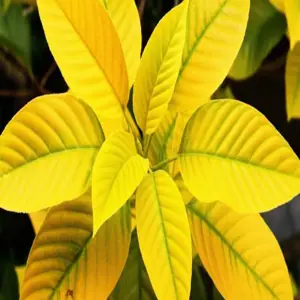
leaf discoloration
a. Cold Stress
Symptoms: Yellowing or browning of leaves. Wilting. Soft, mushy tissues.
Solutions:
- Move Indoors: Move plants indoors when temperatures drop below freezing.
- Protect from Frost: Cover plants with blankets or sheets to protect them from frost.
- Mulch: Apply a thick layer of mulch around the base of the plant to insulate the roots.
b. Heat Stress
Symptoms: Yellowing leaves. Wilting. Dry, crispy leaves.
Solutions:
- Provide Shade: Provide shade during the hottest part of the day.
- Water Deeply: Water plants deeply and regularly, especially during hot weather.
- Mulch: Apply a layer of mulch to help retain moisture in the soil.
6. Correcting Soil pH Imbalance
Testing the soil pH is essential for determining if it’s affecting nutrient availability.
Solutions:
- Soil Testing: Use a soil test kit to determine the soil pH.
- Acidic Soil (pH below 6.0): Amend the soil with lime or wood ash to raise the pH.
- Alkaline Soil (pH above 7.0): Amend the soil with sulfur or acidic organic matter like peat moss to lower the pH.
7. Minimizing Transplant Shock
Transplant shock is a temporary stress that can occur when a plant is transplanted.
Solutions:
- Handle Gently: Handle the plant gently during transplanting to avoid damaging the roots.
- Water Thoroughly: Water the plant thoroughly after transplanting.
- Provide Shade: Provide shade for a few days after transplanting to help the plant recover.
- Use Root Stimulator: Apply a root stimulator to encourage root growth.
8. Addressing Natural Aging
If the yellowing is due to natural aging, there’s no need to worry.
Solutions:
- Remove Yellowed Leaves: Prune off the yellowed leaves.
- Continue Providing Proper Care: Continue providing the plant with proper care to encourage new growth.
Preventing Yellow Leaves: Proactive Plant Care
The best way to deal with yellow leaves is to prevent them from occurring in the first place. Here are some proactive plant care tips:
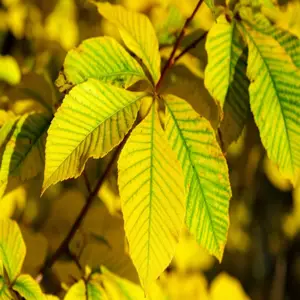
plant health
- Choose the Right Plant for Your Environment: Select plants that are well-suited to your climate, soil conditions, and light levels.
- Use High-Quality Potting Mix: Use a high-quality potting mix that provides good drainage and aeration.
- Water Properly: Water plants thoroughly but infrequently, allowing the soil to dry out slightly between waterings.
- Fertilize Regularly: Fertilize plants regularly with a balanced fertilizer.
- Monitor for Pests and Diseases: Regularly inspect plants for signs of pests and diseases.
- Provide Adequate Light: Provide plants with adequate light, but avoid exposing them to excessive direct sunlight.
- Maintain Proper Temperature: Protect plants from extreme temperatures.
- Repot Regularly: Repot plants regularly to provide them with fresh potting mix and room to grow.
- Prune Regularly: Prune plants regularly to remove dead or damaged growth and encourage new growth.
Current Trends in Plant Care (2025)
The world of plant care is constantly evolving. Here are some of the current trends in 2025:
- Sustainability: Gardeners are increasingly focused on sustainable practices, such as using organic fertilizers, composting, and conserving water. Learn more about sustainable gardening practices!
- Indoor Gardening: Indoor gardening is booming, driven by a desire to connect with nature and improve indoor air quality.
- Rare and Exotic Plants: Collecting rare and exotic plants is a growing trend among plant enthusiasts.
- Plant Subscription Boxes: Plant subscription boxes are a convenient way to receive new plants and gardening supplies on a regular basis.
- Plant Apps and Technology: Plant identification apps, watering reminders, and smart gardening systems are making plant care easier and more accessible.
- Vertical Gardening: Vertical gardening is a space-saving way to grow plants in small areas, such as balconies and patios.
Read More: Best Herbs for a Windy Patio: Grow Strong!
FAQ: Your Questions Answered
Can I use coffee grounds to treat yellow leaves?
Coffee grounds are a good source of nitrogen and can be beneficial for plants that prefer acidic soil. However, they should be used sparingly and composted first to prevent them from acidifying the soil too much. They are best used as a supplement to a balanced fertilizer rather than a sole treatment for yellow leaves.
How often should I fertilize my plants?
The frequency of fertilization depends on the type of plant, the type of fertilizer, and the growing conditions. Generally, actively growing plants should be fertilized every 2-4 weeks during the growing season. Follow the instructions on the fertilizer label for specific recommendations.
Is it better to bottom water or top water my plants?
Both bottom watering and top watering have their advantages. Bottom watering encourages roots to grow deeper in search of water, while top watering helps to flush out excess salts from the soil. Choose the method that works best for you and your plants, or alternate between the two.
Can I use tap water for my plants?
Tap water is generally safe for plants, but it may contain chlorine, fluoride, and other chemicals that can be harmful to some plants. If your tap water is heavily chlorinated, let it sit out for 24 hours before using it to allow the chlorine to dissipate. Rainwater or filtered water is always a better option.
How do I know if my plant has root rot?
Symptoms of root rot include yellowing leaves, wilting, stunted growth, and a foul odor coming from the soil. When you remove the plant from the pot, the roots will appear brown, mushy, and slimy.
What is the best potting mix for indoor plants?
The best potting mix for indoor plants is a well-draining mix that contains a blend of peat moss, perlite, and vermiculite. Avoid using garden soil, as it can compact and retain too much water.
How can I increase humidity for my plants?
You can increase humidity for your plants by using a humidifier, placing them on a pebble tray filled with water, grouping them together, or misting them regularly.
Are yellow leaves always a sign of a problem?
Not always. Sometimes yellow leaves are simply a sign of natural aging. However, it’s important to investigate the cause of the yellowing to rule out any underlying problems.
Can I use hydrogen peroxide to treat plant diseases?
Hydrogen peroxide can be used to treat some plant diseases, such as fungal infections and root rot. Dilute 3% hydrogen peroxide with water (1 part hydrogen peroxide to 3 parts water) and apply it to the affected areas.
How do I dispose of diseased plant material?
Dispose of diseased plant material in the trash or by burning it. Do not compost it, as this can spread the disease to other plants.
Conclusion: Final Thoughts on Yellow Leaves and Plant Health
The sight of yellow leaves on your cherished plants can be disheartening, but understanding the underlying causes and taking prompt action can often restore their vibrant green hue. Remember, yellowing leaves are a symptom, not the disease itself. By carefully observing your plant, identifying the potential culprits (nutrient deficiencies, watering issues, light problems, pests, diseases, or environmental stressors), and implementing the appropriate solutions, you can nurse your plant back to health. While some leaves may never fully recover, focusing on addressing the root cause will prevent further damage and encourage healthy new growth.
In 2025, plant care is becoming increasingly sophisticated, with access to smart technology, sustainable practices, and a wealth of information readily available. Don’t hesitate to leverage these resources to become a more knowledgeable and effective plant parent. Whether you’re a seasoned gardener or just starting your plant journey, remember that patience and observation are key. Each plant is unique, and understanding its specific needs is essential for its long-term health and vitality. So, embrace the learning process, experiment with different techniques, and enjoy the rewarding experience of nurturing your green companions. And if you encounter yellow leaves along the way, don’t despair – with the right knowledge and approach, you can often bring them back to life, or at least ensure the overall health and well-being of your plant for years to come. Remember to always prioritize safe and environmentally conscious practices in your plant care routine, adhering to local regulations and guidelines. By doing so, you contribute to a healthier and more sustainable future for both your plants and the planet.
Auto Amazon Links: No products found.
Perfect Plants Christmas Tree Saver 8oz. | Easy Use Xmas Tree Preserver Food | Have Healthy Green Christmas Trees All Holiday Season
$9.97 (as of December 16, 2025 05:22 GMT +00:00 - More info- Product prices and availability are accurate as of the date/time indicated and are subject to change. Any price and availability information displayed on [relevant Amazon Site(s), as applicable] at the time of purchase will apply to the purchase of this product.
FirEver Pure Christmas Tree Food | Preserver Additive & Season Extender for Live Xmas Trees | Keep It Green, Reduce Needle-Drop | Miracle Freshness (8 oz)
$14.99 (as of December 16, 2025 05:22 GMT +00:00 - More info- Product prices and availability are accurate as of the date/time indicated and are subject to change. Any price and availability information displayed on [relevant Amazon Site(s), as applicable] at the time of purchase will apply to the purchase of this product.
Rocky Mountain Goods Christmas Tree Food - 8 oz Tree Preservative - Reduce Needle Drop - Greener Scent - Fir, Pine, Spruce Trees - Extend Tree Life
$9.95 (as of December 16, 2025 05:22 GMT +00:00 - More info- Product prices and availability are accurate as of the date/time indicated and are subject to change. Any price and availability information displayed on [relevant Amazon Site(s), as applicable] at the time of purchase will apply to the purchase of this product.
EZMeetU Christmas Tree Watering Funnel, 47 Inch Flower Shape Adjustable 6 Section Design, Christmas Tree Watering System, Christmas Tree Waterer, Long Funnel Wide Opening Reusable, Plant Watering Tool
$16.99 (as of December 16, 2025 05:22 GMT +00:00 - More info- Product prices and availability are accurate as of the date/time indicated and are subject to change. Any price and availability information displayed on [relevant Amazon Site(s), as applicable] at the time of purchase will apply to the purchase of this product.
VICAMB 39.3 Inch Christmas Tree Watering Funnel,Christmas Tree Watering System Device,Long Tree Watering Funnel Spout for Indoor Outdoor Xmas Tree
$17.99 (as of December 16, 2025 05:22 GMT +00:00 - More info- Product prices and availability are accurate as of the date/time indicated and are subject to change. Any price and availability information displayed on [relevant Amazon Site(s), as applicable] at the time of purchase will apply to the purchase of this product.
Snow Joe Premium Enviro Blend Ice Melt, Green-Coated Deicer Crystals, 50 lb - Safer Melter for Vegetation, Concrete & Metals w/ Anti-Corrosion Calcium Magnesium Acetate
$32.97 (as of December 12, 2025 19:27 GMT +00:00 - More info- Product prices and availability are accurate as of the date/time indicated and are subject to change. Any price and availability information displayed on [relevant Amazon Site(s), as applicable] at the time of purchase will apply to the purchase of this product.
Muddy Mat® Shown on TV Super Absorbent Microfiber Dog Door Mat for Muddy Paws, Non-Slip Washable Pet Rug, Quick Dry Chenille Entryway Carpet, Machine Washable Indoor Outdoor mat, Grey 30"x19"
$24.95 (as of December 12, 2025 19:27 GMT +00:00 - More info- Product prices and availability are accurate as of the date/time indicated and are subject to change. Any price and availability information displayed on [relevant Amazon Site(s), as applicable] at the time of purchase will apply to the purchase of this product.
ivtivfu Rolling Grill Basket, Removable Wooden Handle, 304 Stainless Steel, Nesting BBQ Tools, Smoker Grilling Accessories for Vegetable, Outdoor Cooking Camping, Birthday Gifts for Men Dad Husband
$25.99 (as of December 12, 2025 19:27 GMT +00:00 - More info- Product prices and availability are accurate as of the date/time indicated and are subject to change. Any price and availability information displayed on [relevant Amazon Site(s), as applicable] at the time of purchase will apply to the purchase of this product.
XXXFLOWER Plant Terrarium with Wooden Stand, Air Planter Bulb Glass Vase Metal Swivel Holder Retro Tabletop for Hydroponics Home Garden Office Decoration - 3 Bulb Vase
$18.98 (as of December 12, 2025 19:27 GMT +00:00 - More info- Product prices and availability are accurate as of the date/time indicated and are subject to change. Any price and availability information displayed on [relevant Amazon Site(s), as applicable] at the time of purchase will apply to the purchase of this product.
Zevo Flying Insect Trap Official Refill Cartridges - Fits Both Zevo Trap & MAX Indoor Fly Trap - Authentic Trap+Lock Technology to Catch Gnats, House & Fruit Flys (4 Official Refill Cartridges)
$14.97 (as of December 12, 2025 19:27 GMT +00:00 - More info- Product prices and availability are accurate as of the date/time indicated and are subject to change. Any price and availability information displayed on [relevant Amazon Site(s), as applicable] at the time of purchase will apply to the purchase of this product.
